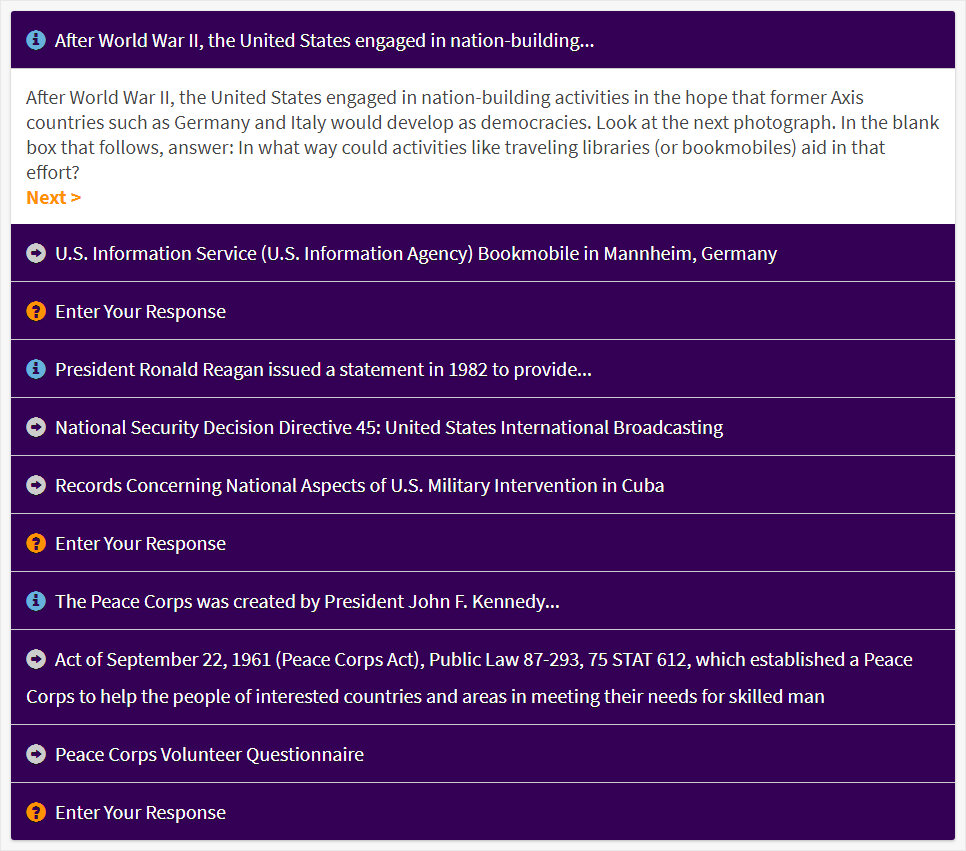This activity asks students to identify connections between the Smith-Mundt Act (formally titled the United States Information and Educational Exchange Act of 1948) and items that illustrate cultural diplomacy. Students will answer questions that require them to analyze each document, image, or film in order to explore relationships the United States developed with other countries after World War II.
Suggested Teaching Instructions
This activity can be used in a unit on the Cold War and Post-World War II American and European history. For grades 9–12. Approximate time needed is 45 minutes.
Begin by providing students with historical context on Europe in the aftermath of World War II and the Cold War between the United States and the Soviet Union. Define terms such as: culture, diplomacy, and cultural and public diplomacy.
Explain that the mission of the United States Information and Educational Exchange Act of 1948, popularly known as the Smith-Mundt Act, was to "promote a better understanding of the United States in other countries, and to increase mutual understanding" between the United States and other countries. The legislation promoted programs that developed personal contacts between Americans and others (such as the Peace Corps) and that helped non-Americans develop a familiarity with, and affinity for, Americans and American culture (such as Voice of America). Through books, radio, and television, citizens of other nations could develop an understanding of American values, freedoms, and experiences. (However, Americans in the United States could not access these programs until other legislation was passed.)
First Lady Laura Bush was quoted as saying, "We saw art diplomacy during the Cold War, when even as the Soviet Union and the United States were on the brink of conflict, the people of these two countries found a common interest in jazz."
Encourage students to keep the following questions in mind as they analyze primary sources and complete the activity:
- How has the United States Government used culture to build stronger relations with other countries?
- What are the limits to the success of cultural diplomacy, if any?
- How can cultural diplomacy help to solve some of today's international crises?
Students should analyze each primary source and answer the questions that follow. The activity culminates in the final question:
In recent years, American film, television, and the Internet has spread American culture far beyond our borders. Using the examples from this activity, hypothesize what projects and programs could be created to improve relations today between the United States and the Middle East and the United States and North Korea.
This activity was created by National Archives volunteer Cynthia Peterman.




